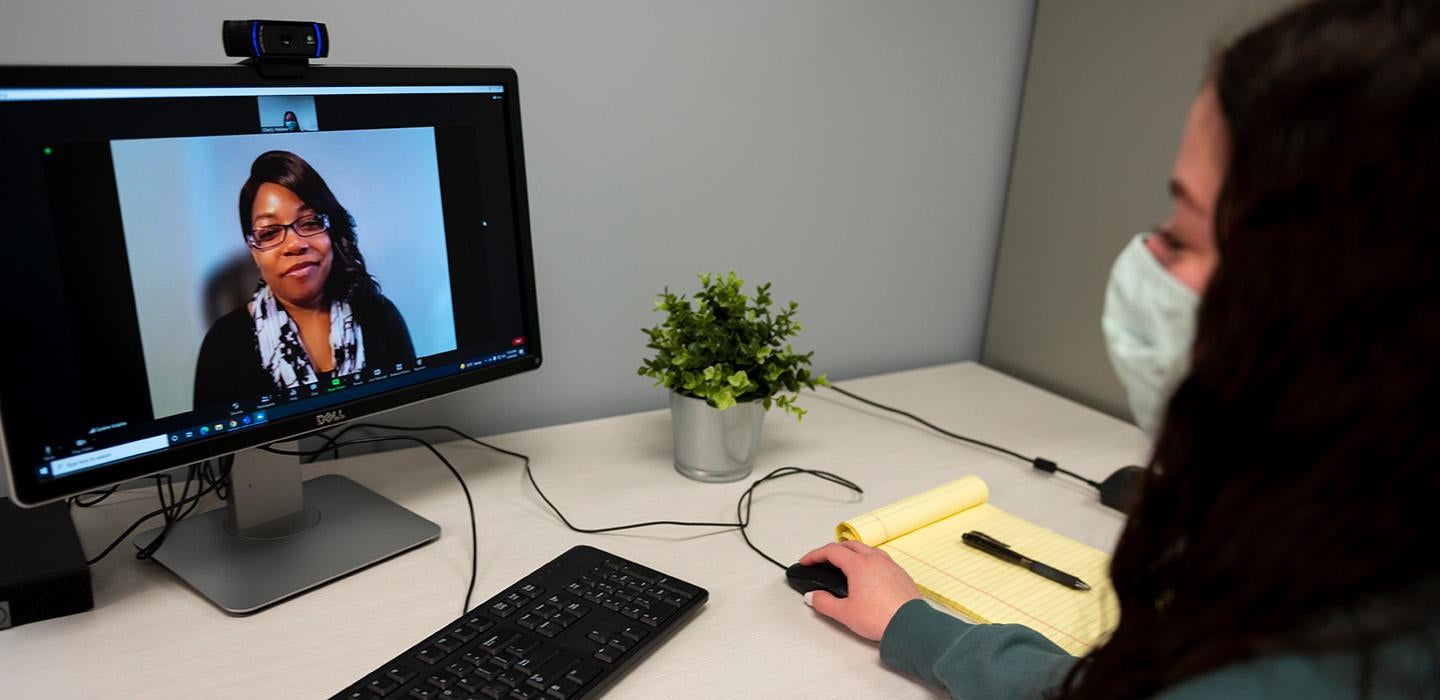
Subscribe to Pittwire Today
Get the most interesting and important stories from the University of Pittsburgh.At the height of the COVID-19 pandemic, the media and some mental health professionals began to speculate about the ways lockdown, isolation and worry about the disease would worsen people’s mental health. But new research shows that not everyone took the same hit from the pandemic.
“As much as we found evidence of symptom increase across different kinds of samples and different symptoms, we also found a lot of evidence of resilience,” said study lead author Mary Blendermann, a psychology PhD student working under the supervision of Lauren Hallion, assistant professor of psychology in the Kenneth P. Dietrich School of Arts and Sciences.
Early reports during the pandemic suggested ballooning mental health diagnoses, Blendermann notes, but without being able to compare pre-COVID-19 rates of mental illness with rates reported at the height of stay-at-home orders, there wasn’t scientific evidence to confirm an increase in diagnoses.
To make that comparison, Blendermann and other students analyzed comparable studies to find out how symptom severity and prevalence for six different kinds of mental health conditions changed from before the pandemic to the period after Jan. 29, 2020 — the day before the World Health Organization designated COVID-19 a public health emergency of international concern.
They published their results in the journal Psychological Medicine. Clinical psychology PhD student Tracie Ebalu and psychology major Immanuela Obisie-Orlu (A&S ’22) were also co-authors.
The paper considered six symptom clusters: obsessive-compulsive disorder (OCD), post-traumatic stress disorder (PTSD), fear, anxiety, depression and general distress. Across the 97 studies analyzed, Blendermann did find a trend toward increasing symptoms of mental illness at the population level for all illnesses other than PTSD. (That exception may be because the team didn’t find many studies that considered PTSD, Blendermann said.)
When the team analyzed by demographic groups and across different illnesses, more patterns began to emerge. Some groups fared better than others, and some illnesses tended to increase more. Those with OCD showed an increase in symptoms, for instance, including increases in washing and other contamination-related symptoms. It makes sense that a contagious disease may have disproportionately affected people with preexisting fears of contamination, Blendermann said.
But save for people with OCD, those with preexisting mental health conditions were not any more affected than people without. Like others, they tended to show increases in anxiety and general distress.
“I see that as being a response to a global pandemic,” Blendermann said. "People might just be more anxious because the environment had more threats.”
When the researchers analyzed data by demographic groups, they found healthy young people showed the biggest increase in symptoms of anxiety and depression. Another group that showed a marked increase in anxiety and depression was 20- to 40-year-old women. Blendermann suggested that might be the result of the increased duties — teaching and caretaking, for instance — women took on during the pandemic.
Despite the overall increased incidence of some symptoms of mental illness, Blendermann said, the team also found plenty of evidence of resilience. In some studies that collected data as the pandemic wore on, early symptoms of certain conditions were followed by returns to baseline.
Hallion, the paper’s senior author, noted that some people’s mental health may have benefited from the conditions imposed by COVID-19. “Students and people with pre-existing mental health conditions generally did not show an overall worsening of anxiety and depression from before to during the pandemic,” she said. “It may be that lowered academic, social and professional expectations due to the pandemic had a protective effect for these groups.”
Being able to work from home, for instance, may have led to reduced stress for those with anxiety disorders. It would be a mistake to assume that even a disaster on the scale of COVID-19 would have an enduring negative effect on everyone, Blendermann said.
“People do adapt, they do find ways to find stability, even when something this disruptive happens.”
— Brandie Jefferson, photography by Tom Altany


